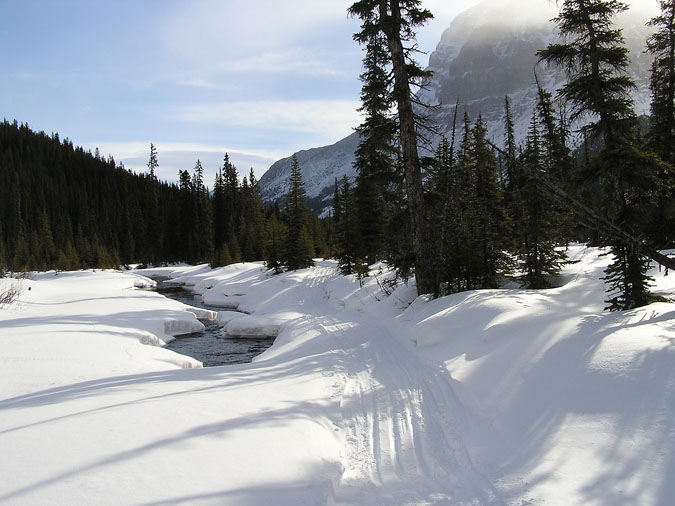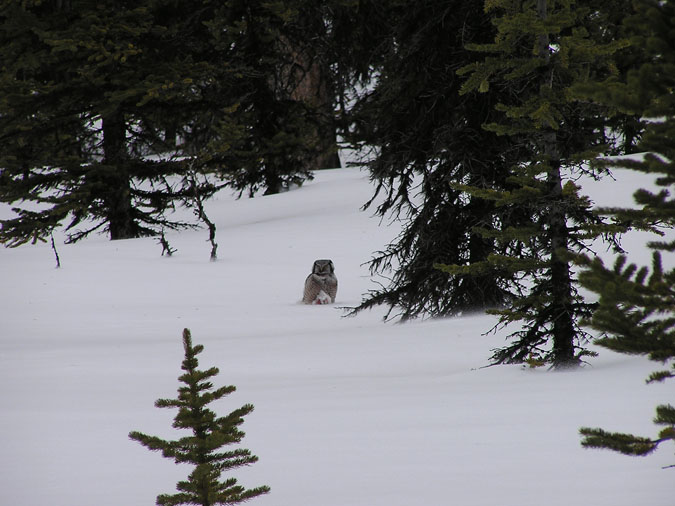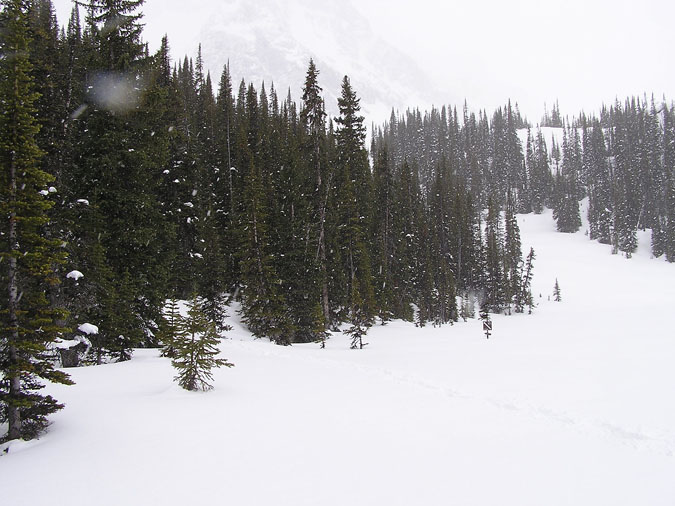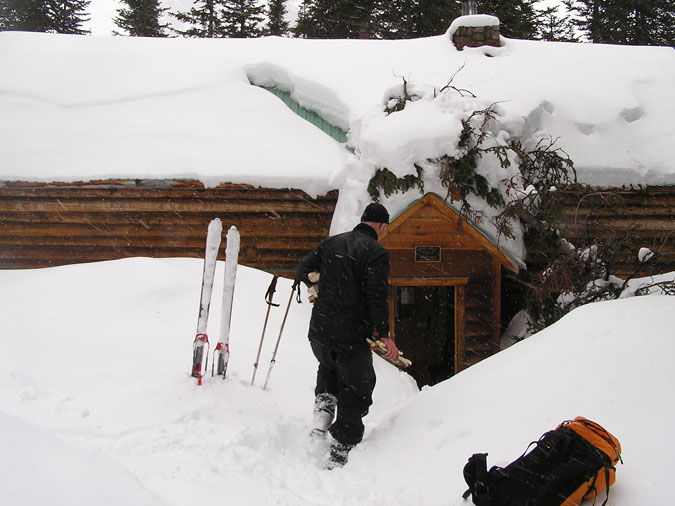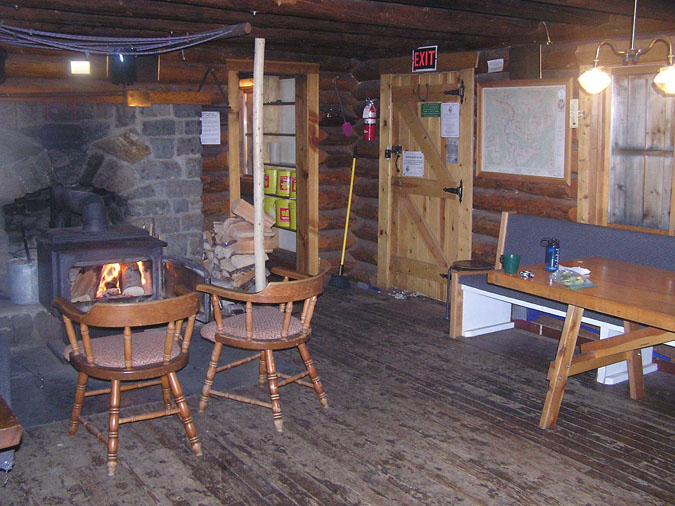
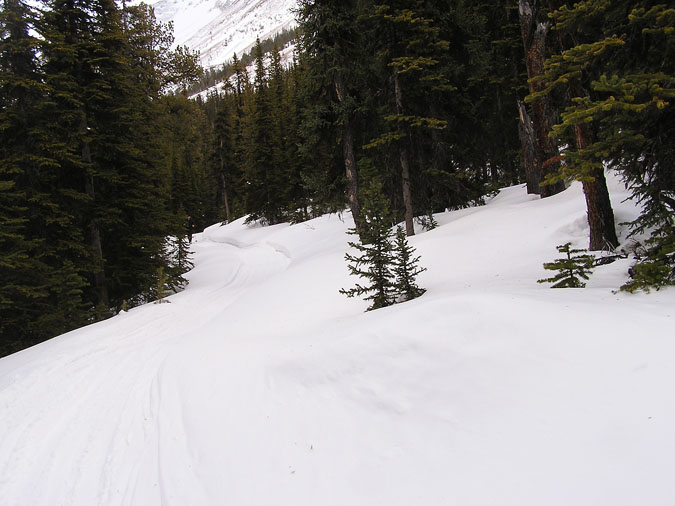
I was a little concerned about Day 2 since it was the day we'd be skiing into the ACC Wates Gibson hut - a hut which was notorious for being a little hard to find. To make things worse, I forgot my guidebook at home although Bob and I both had mapping GPS's.
On Day 1, we ran into a group who were forced to build a snow cave since they were unable to find the hut. At least we knew not to follow their tracks.
Here's the first part of Day 1 which was a quick descent from the Cavell Hostel to the Astoria River.
Somewhere along this stretch, I wiped out and lost a blue 1L Nalgene bottle. Luckily, I carried a spare bottle while Bob carried a water filter.
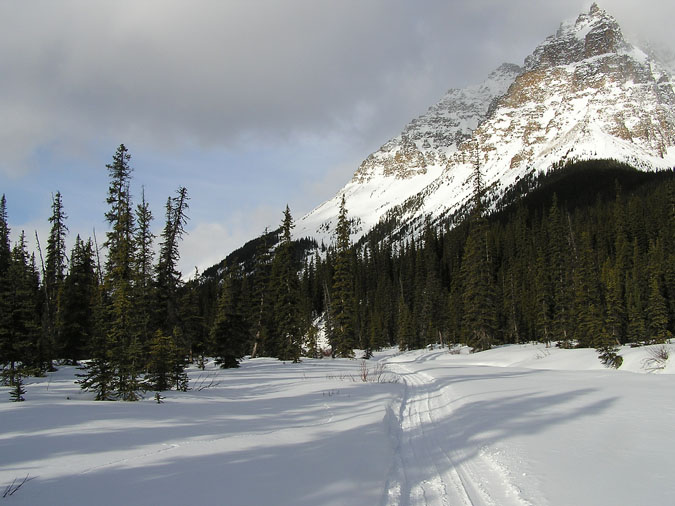
Here's the typical view of the Astoria Valley as it winds westwards towards the Tonquin valley.
As you can see, it's hard to get lost due to the snowmobile tracks.
We noticed that the snowmobiles (which made their way to the Tonquin lodge) made at least 2 trips per day and were carrying a sled full of building supplies for a possible expansion to their operations. It was a little distracting to hear and smell the snowmobiles as they passed but at least they groomed the trail. It probably didn't make a huge difference for Bob but it sure made the skiing a lot easier.
The tracks would lead to within a km of Chrome Lake where a small sign indicated the turnoff towards the ACC hut.
